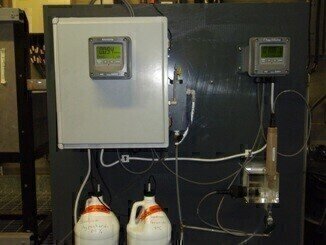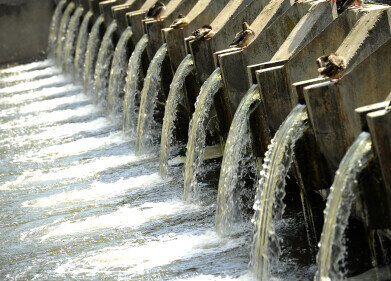River Water monitoring
Ammonia Monitor for water works inlet protection monitoring
Jul 14 2010
Continuous monitoring of ammonia in river water is important for plant operations and environmental agencies. Analytical Technology’s dissolved ammonia monitor enables organisations to effectively measure the levels of ammonia in river water.
River water quality is assessed by the Environment Agency through the General Quality Assessment (GQA) scheme and it is essential that potentially harmful chemicals in river water are controlled. Ammonia is an important nutrient for plants and algae that reside in river water. However, when river temperatures change, ionized ammonia changes to un-ionized ammonia gas. This can be fatal to fish and other water organisms in the river, therefore it is important that ammonia levels are continuously monitored.
Water quality is also important for water treatment plants using river water as the water source. High ammonia levels in the inlet water cause major problems in the disinfection process. By successfully measuring the ammonia content in river water at inlets to water treatment plants, organisations are able to protect the inlet supply. In some applications, when ammonia levels hit unacceptably high levels the inlet can be closed.
Current ammonia monitoring technology is expensive and complex, using ion selective electrodes and costly reagents, which are toxic and difficult to dispose of. These monitors are also non specific and require continuous calibration in order to suit different needs such as wastewater treatment, potable water treatment and measuring levels of ammonia in river water. Ion selective electrodes typically need daily zeroing and calibration using reagents.
The Q45N Dissolved Ammonia Monitor avoids the challenges of conventional ammonia monitors through using a completely unique method. Ammonia is converted to a stable monochloramine compound, equivalent in concentration to the original ammonia level. The chloramine concentration is then measured with a polarographic membraned sensor that selectively responds linearly to chloramines. The reaction chemistry gives the monitor excellent sensitivity even at very low (ppb) ammonia levels.
Reagents are simple and inexpensive and their usage is low. As a consequence the Q45N has a very low cost of ownership. The monitor has two 4-20mA outputs programmable for free ammonia, total ammonia and monochloramine concentration. This allows all the important parameters to be measured on a single instrument.
The larger UK water companies and some Environment Agency approved laboratories are already using the Q45N monitor to effectively monitor ammonia levels in river water. This new ammonia system from Analytical Technology provides users with a monitor that is both simple to operate and economical to purchase, with low running costs and no measurement interferences.
For more information about the Analytical Technology Q45N Dissolved Ammonia Monitor for the continuous, on-line monitoring of ammonia in raw water, please call +44 (0)1457 873318, e-mail vickyw@atiuk.com or visit www.analyticaltechnology.com
Digital Edition
AET 28.4 Oct/Nov 2024
November 2024
Gas Detection - Go from lagging to leading: why investment in gas detection makes sense Air Monitoring - Swirl and vortex meters will aid green hydrogen production - Beyond the Stack: Emi...
View all digital editions
Events
Nov 26 2024 Paris, France
Nov 27 2024 Istanbul, Turkey
H2O Accadueo International Water Exhibition
Nov 27 2024 Bari, Italy
Biogas Convention & Trade Fair 2024
Nov 27 2024 Hanover, Germany
Dec 02 2024 London, UK



-min.jpg)










.jpg)






